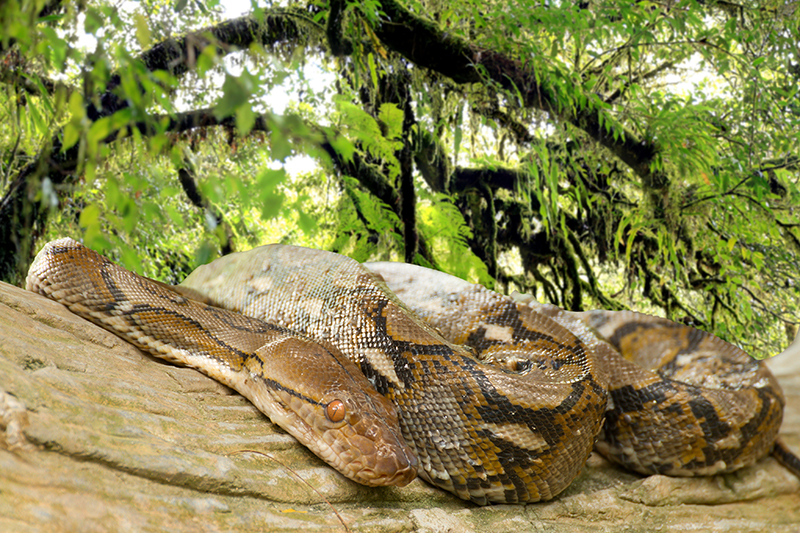How Can You Protect Yourself?
In honor of Halloween, think of things that scare you most, those creepy crawlies or things that go bump in the night. . . Or what about things that hiss and slither? Of course we’re talking about snakes. Nothing strikes more fear in the hearts of people with snake phobias. The truth is, if you live in the U.S., you have a better chance of dying from a lightning strike than a snake bite. However, there are true stories of rare, but real, incidents of snakes taking the lives of humans.
Are Fatal Snake Attacks on the Rise?
Snakes do not typically harm humans. But as more land is cleared away for development, and their natural habitat begins to disappear, it may become more common for snakes and humans to interact—and not in a good way. For example, you may have heard the story of a woman in Indonesia who was swallowed whole by a python.
According to Live Science, this 54-year-old woman went out to check on her corn field in the middle of the night when she was attacked by a 23-foot python. No one would have ever known what happened to her, because there was no evidence of the attack. However, when friends and family searched for her, they managed to find an extra bloated python. When it was cut open, they found the woman inside. Reticulated python attacks are extremely rare, which makes this outcome all the more shocking. Typically, these snakes will feed on mammals such as deer, but they’ve been seen eating more dangerous targets like alligators. The fact that the woman from this sad event was well under 5 ft tall makes her an ideal target for an extremely hungry and opportunistic snake.
No, fatal snake attacks are not on the rise. In fact while this story is a true one, it’s far far from home in a land that if you ever happen to visit, the odds of winning the lottery are still much higher than being eaten by a snake.
How does a python kill its prey?
When a python swallows its, the animal isn’t alive. First, the python wraps itself around the prey, and it usually dies of heart failure before the snake feasts on it. Even more disturbing, pythons of this size can digest just about anything, including skeletons. If no one had gotten to the snake in time, there may have been no evidence left at all!
So what can you do?
If you travel to other countries where exotic species live, educate yourself on the types of snakes that live there, how aggressive they can be and learn if they are dangerous. Wear protective clothing and always bring the right gear for the type of trip you are on.
Educate yourself about snakes. Even though fatal encounters are rare, it’s good to know which species of snakes are the most dangerous. Most people have heard of the Rattle Snake, a species of viper. Other vipers include Copperhead Snake of North America and the Gaboon Viper. There’s also the deadly Elapids like Cobras, Mambas Blue Kraits, and the Belcher’s Sea Snake of southeast Asia and northern Australia.
Check out more of our blog posts, where we’ve offered some helpful advice about how to tell if the snake you see is venomous. We’ve also provided helpful tips on what to do if you’re bitten by a snake.
Remember, snakes are generally very misunderstood creatures. It’s best to educate yourself about them, because education can turn fear into knowledge and a healthy respect. At New England Reptile Shows, we’re dedicated to teaching and debunking myths about snakes and other reptiles.
Would you like a close encounter with a python? Book a show today and we will bring over a dozen reptiles from around the world and show you just how amazing they can be up close!



